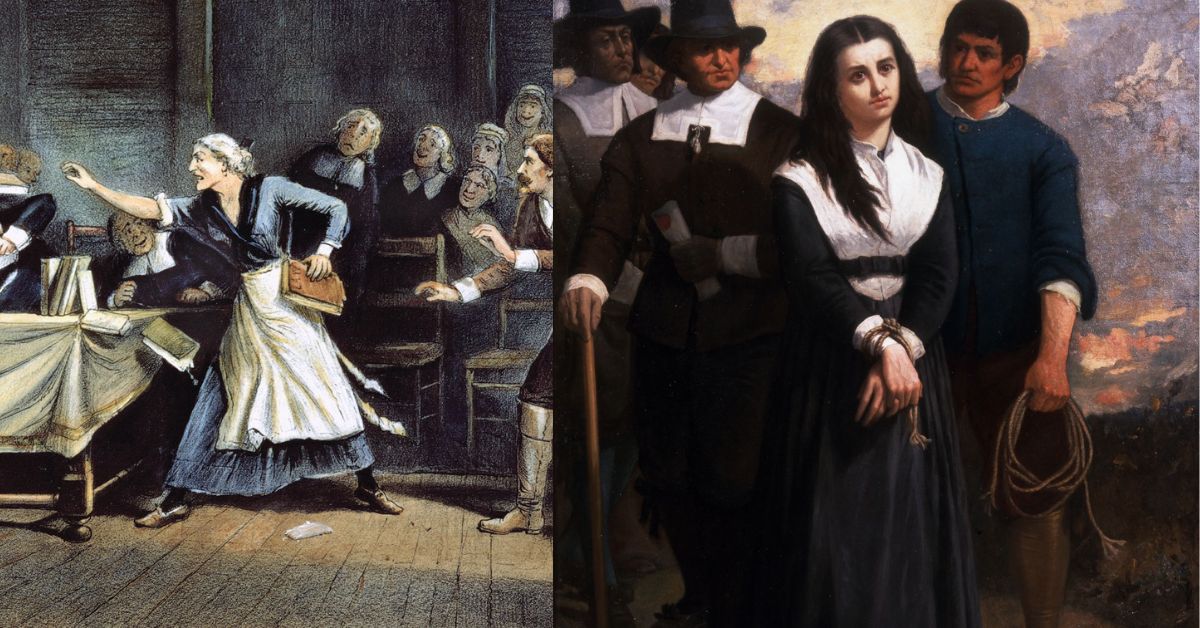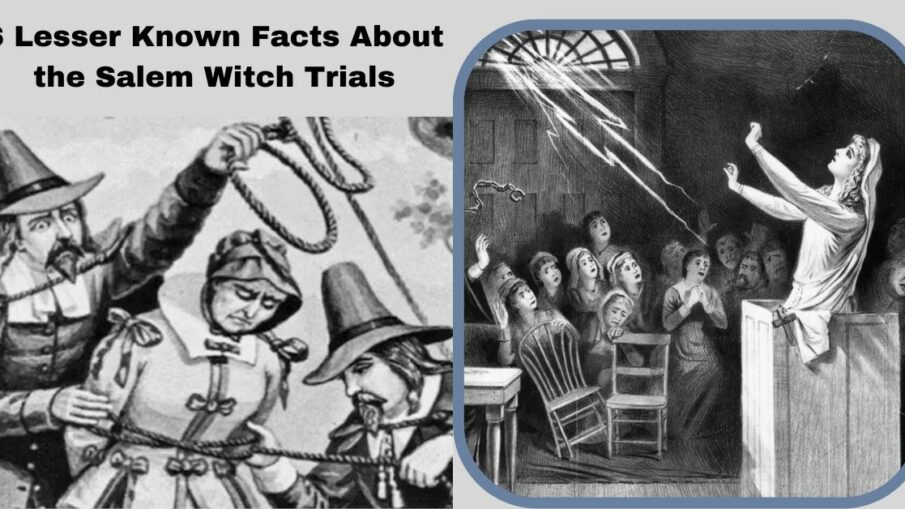We are all accustomed to the term “witch hunt” today. Politicians, entertainers, and news organizations frequently repeat it. But it wasn’t until the seven-month Salem Witch Trials in 1692 that this expression entered the English language.
The colonists of Massachusetts perceived sorcery and mingling with Satan, which amounted to selling one’s soul, as serious threats. This was a threat to the authority of God, and as you would expect, the Church of Puritan New England did not take this lightly.
Over 150 persons were charged between February 1692 and May 1693, and 25 of them were murdered. Most people understand the basic premise of the narrative: widespread frenzy led to irrational accusations against one another and eventual condemnation of the city’s women.
However, there are certain myths surrounding the Salem Witch Trials and untold portions of the narrative. In this piece, we’ll explore some little-known details concerning the Salem Witch Trials.
1. Witches Tests Could Not be Passed
Witch trials reached their height in Europe during the Middle Ages, but they persisted when Massachusetts accused its citizens of being witches. The tests were designed by clergymen, and accused witches would be put to the test until they failed, demonstrating their use of witchcraft.
Nobody could pass all of the examinations, and there was no way to avoid them. The swimming test was one of the most well-known tests used during the Salem witch trials. The purity of water served as the central theme. The water was believed to repel evil, thus if the accused floated, they were guilty.
While frequently drowning, they were considered innocent if they sank. While the swimming test is fairly well-known, those accused of witchcraft in Salem were frequently subjected to more esoteric and imaginative tests.

This included the weight test, the incantation test, the touch test, and the witch cake test. The Salem witch’s purportedly strangest test was the witch cake one. Most of the time, it was difficult to pass this test because forcing any species to consume a cake mixed with bodily material would probably have bad consequences.
In essence, the witch was instructed to make a cake with the victim’s pee and give it to a dog. Dogs were thought of as witches’ devoted familiars, thus if the dog experienced bad effects and those effects persisted, the accuser was found guilty of witchcraft.
The touch examination was easy. A victim was ordered to be touched by the accused witch, and if the victim experienced pain, the accused was deemed guilty. The incantation test also stated that an accused witch was guilty if their alleged victims were healed after they prayed to the devil to alleviate their ailments.
In retrospect, it is simple to understand how the supposed victims took advantage of these examinations. The witch would still seem guilty if they lied carelessly. The weight test came in last and was the least reliable. Witches were believed to be incredibly light, and the accused was judged in light of the Bible.
If they were weaker than the Bible (which they never were), they were a witch. The courts simply went on to another test if they weighed more than the book (which they always did), blaming the evil power of the devil for defaming the weight test.
To read more such facts, click on the links of the articles given below:
- 8 Interesting Facts About Polar Explorer Roald Amundsen
- Top Five Surprising Facts About Martin Luther King Jr.
2. No One Was Burned at the Stake
It is simple to picture all the witches being burnt at the stake when one thinks about the Salem witch trials. Actually, the European witch trials are where this myth originated. It was a long-standing tradition to punish heretics by having them burnt at the stake.
Along with thousands of other people who were convicted of heresy throughout the Middle Ages, Joan of Arc was burnt at the stake. Through the 18th century, the custom persisted over all of Europe for several hundred years.
Because many of the tens of thousands of witch deaths that took place in Europe involved burning at the stake, this method of execution is frequently associated with witch trials. But there was no burning of the accused alive in Salem.
One man, Giles Corey, was crushed under rocks till he died, while the majority of them were hanged. More alleged witches either perished in prison or received pardons. Pregnant women were frequently granted stays of execution or were exonerated because of this.
While their mothers were in prison, two children—the son of Elizabeth Proctor and the daughter of Sarah Good—were born. The execution of Good’s mother occurred before Mercy, who was Good’s daughter, passed away.
3. The Youngest Accused Witch Was Four Years Old
Although the majority of the alleged witches were adults, some of them even old adults, Dorothy Good was an exception. When Dorothy was accused of witchcraft and detained, she was either four or five years old. Her mother, Sarah Good, was one of the ladies hanged for allegedly worshiping the devil.
Sarah Good was a suspected witch. According to rumors, Dorothy’s association with the devil caused her to become animalistic and insane. Little Dorothy reportedly had no understanding of what was going on, but when the Magistrates questioned her, she confessed to the alleged offenses.
The court was able to imprison her due to the witness’s statement that she had seen her mother with Satan. Following her admission, Dorothy was imprisoned for seven months before being released on bond. While Dorothy was incarcerated, her mother was hanged.
4. Courts Allowed Spectral Testimonies
The sole form of evidence utilized to convict the alleged witches was circumstantial. The alleged victims had no evidence beyond their own words, and no one could actually make Satan appear in court. In the Salem witch trials, this meant that spectral evidence was acceptable.
As the accused could offer no defense for their spirit, spectral evidence was based on a victim’s testimony that they had seen the accused in the shape of their spirit or their body and that they had hurt the victims in this astral manner.
So, spectral evidence made up the majority of the prosecution’s case against the alleged witches. The courts accepted the attacks as proof when the victims alleged that the witch’s ghost had attacked them. Many preachers at the time disputed the use of spectral evidence, including the father-and-son ministry of Increase and Cotton Mather.
Increase Mather opposed its use because the devil could use anyone’s spirit for evil, not because it wasn’t feasible. His son Cotton Mather thought spectral proof was useful since Satan could only inhabit the spirits of his allies.
The inclusion of supporting evidence in addition to spectral data was, nevertheless, commended by him. Eventually, the use of ghostly evidence was prohibited in Salem courts, which led to the reversal of numerous convictions, the release of a number of accused witches, and the speedy conclusion of the trials.
5. Most of the Accusers Were Children
The people who were “afflicted” or victimized by the alleged witches were generally young, despite the fact that many suspected witches turned on one another. Elizabeth Parris and Abigail Williams, who were 9 and 11 years old, were the initial accusers.
The girls were the niece and daughter of Puritan pastor Reverend Samuel Parris, and when they became ill, they attributed their symptoms to Tituba, an enslaved person who lived in Parris’ home. The oldest of the young women who followed was 20.
They said that alleged witches had given them a variety of illnesses. In truth, rather than witchcraft, if the accusers were ill, it was because of tainted water. They may have blamed their neighbors for ailments they couldn’t explain or possibly neighborly disputes.
Many of the accused even turned on their neighbors in the hope of getting away with it if they could get the judges to focus on someone else instead of them.
6. The Trials Only Stopped When the Governor’s Wife Was Accused
William Phips served as the Massachusetts Bay Colony’s governor during the Salem witch trials. His involvement in the trials was inevitable due to his close friendship with a select group of clergy and well-to-do people in the society.
Phips appears to have mostly separated himself from the power structure and wiped his hands off the panic, but he did not forbid his officials from carrying out their investigation. William Stoughton, the Lieutenant Governor of Phips and Chief Justice of the inquiry into the purported witches of Salem was one such officer.
Stoughton was well renowned for expediting trials and executions, against the customs of the day. The church advised Stoughton to be careful but firm in his convictions, and he heeded their advice. In addition to being bloodthirsty, Stoughton was also strong.
While the governor participated in the fortification of Maine and the colony’s defense against French and Native American incursion, he assumed most of Phips’s governmental responsibilities. In the week after Phips returned from Maine, his Lieutenant Governor had executed 20 people and sentenced eight more, leaving a huge disaster in his wake.
Eight newly accused witches were to have graves dug for them by Stoughton. Beyond eight individuals were named in the charges, and prominent colonists like Phips’ wife were also named. The Salem witch trials would no longer accept spectral evidence after Phips learned of the accusations made against his wife.
Following the exoneration of the eight witches Stoughton had intended to prosecute, the Lieutenant Governor resigned from his position. All alleged witches were soon after, in February 1693, pardoned and released from custody by May.
Hope you like it. Stay tuned with us on Thegeofacts.com for more amazing updates.


Leave a Reply